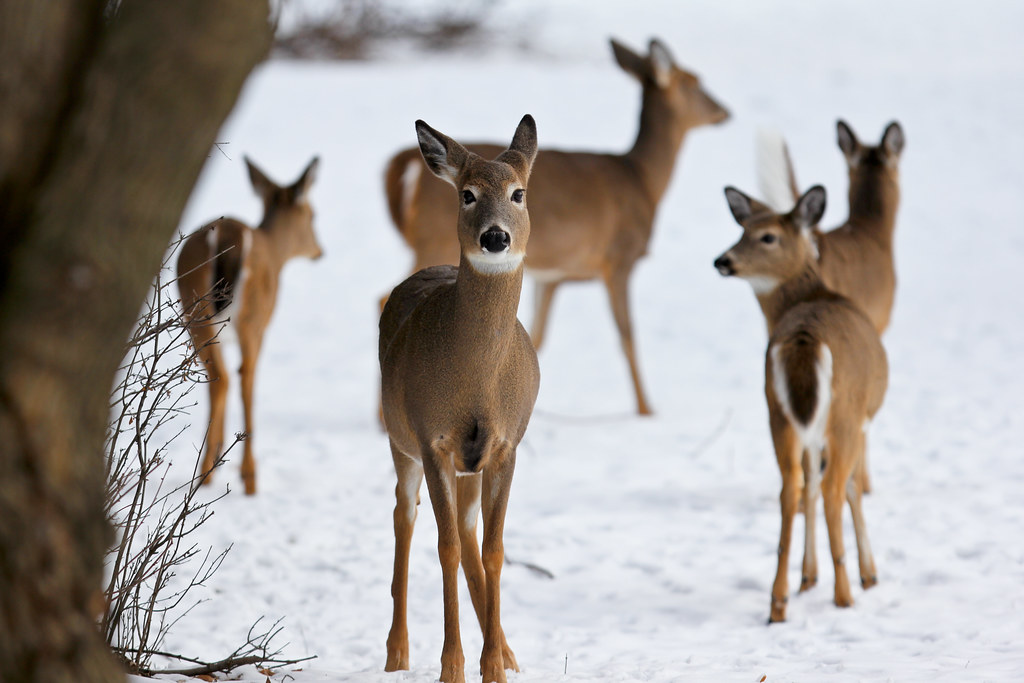 |
| A larger group of does and yearlings on North Park Village's grounds |
So I guess maybe its a bit surprising how much I'm against the people in my community that are up in arms over deer population control measures proposed for the nature center and surrounding areas. For years now, just about any event you go to will have one "LEAVE OUR DEER ALONE!" person waving a petition and handing out fliers. Being hands off, it seems like a side I'd be on, but frankly there's a problem here.
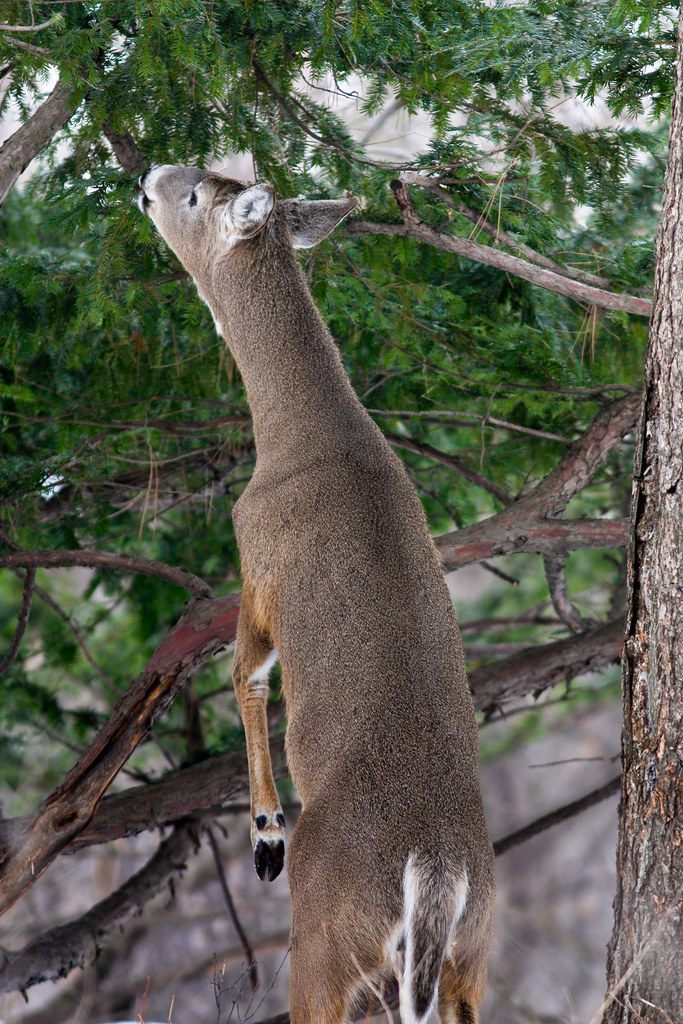 |
| Hungry Buck foraging off a Yew in winter |
At one time, Illinois had large predators, lots of them. We had bears, wolves, and cougars, all of which predated larger herbivores, like say, deer. After wiping them out, we're left with coyotes and bobcats, both of which are a too small to be a predator of deer on a regular basis. Here in the city, we don't have any bobcats, and coyotes, while rising in population are still very rare. Add that to the fact that in urban areas, we don't have wide expanses for wildlife to travel. What we have are small islands of woodlands or prairie amid a sea of concrete, glass, and asphalt. This both makes it difficult for wildlife to migrate to new areas in search of food, and gives them very small areas expanses to forage that are easily depleted. In the end, there is no balance in this ecosystem, because WE created it. Since we've created it, we have to maintain it, or it will go to ruin, along with all the small amounts of wildlife we have in it.
Unfortunately part of that maintenance is population control of large herbivores, since we have no mechanism in this manufactured ecosystem to keep those populations in check.
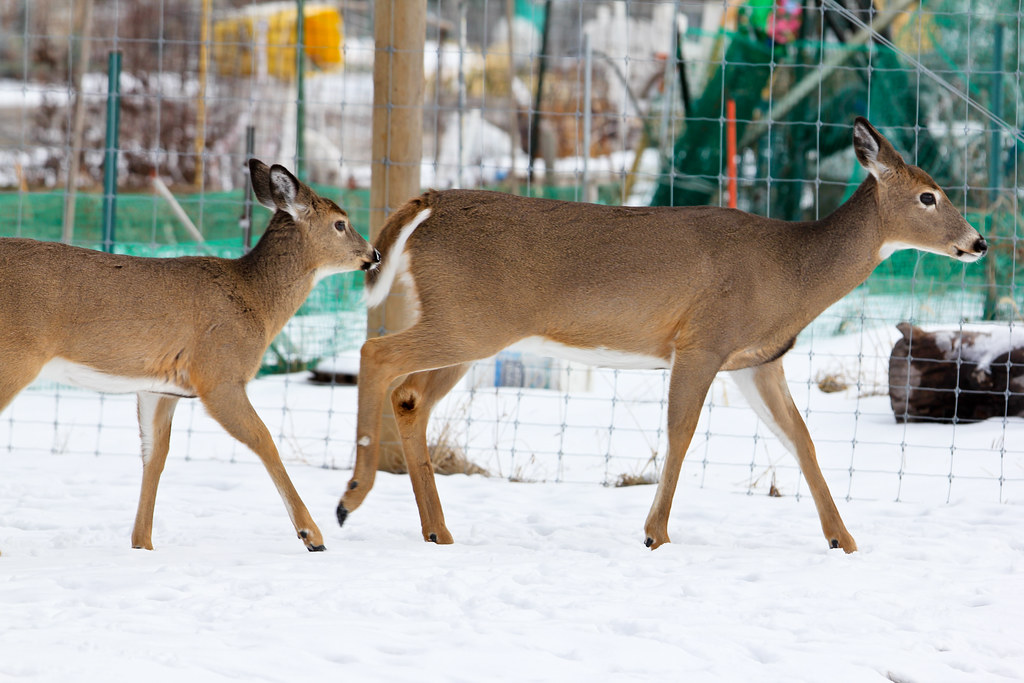 |
| A doe and her yearling walk by the large deer fence surrounding the community gardens at North Park Village |
As of now, there are somewhere around two dozen deer living in North Park Village-Peterson Park grounds. That's the grounds outside the nature center. Within the nature center, add about 10-12 more. Each doe adds another one-three fawns every year. The numbers are somewhat staggering when you look at the limited number of space.
The 'Save Our Deer' people will argue that we are exaggerating the limited number of space these deer have to roam. Across the street from North Park Village you have several large cemeteries, and these cemeteries back up against the stretch of forest preserves that run along the north branch of the Chicago River. So the deer, they claim, have a much larger expanse to roam.
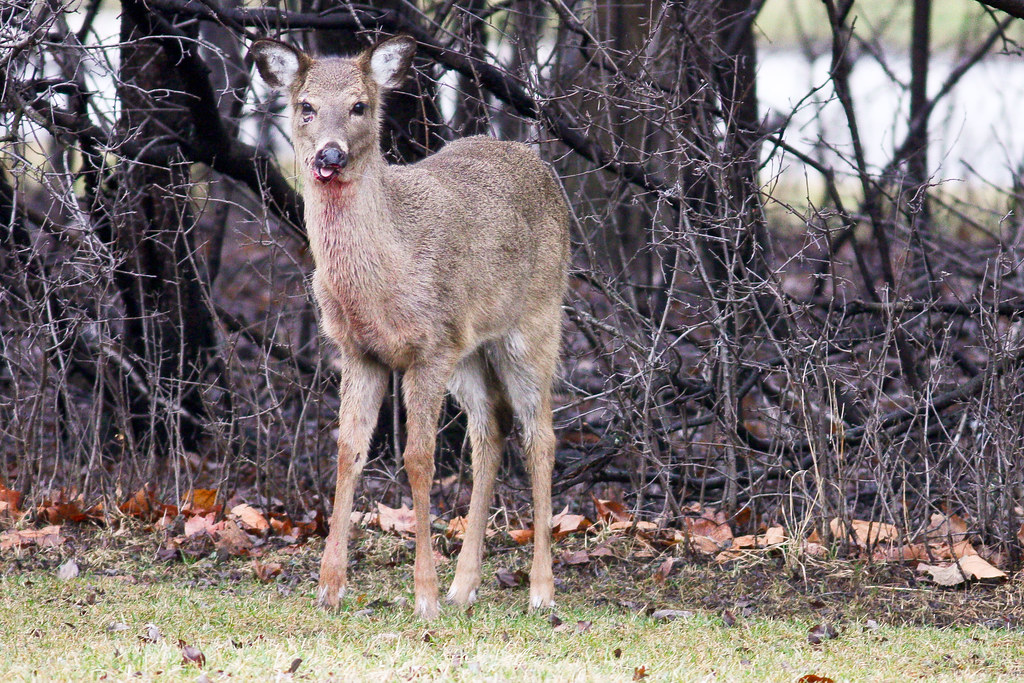 |
| An injured and bloody yearling, likely having had a bad run in with a car |
I've seen several injured deer over the last year, including a yearling covered in blood and a crippled doe that was hobbling around on three legs. The poor doe was doing so while trying to rear her fawn. Unfortunately, due to our lack of predators, she'll probably live for quite awhile, getting just enough food to scrape by and survive.
 |
| A yearling standing among plant stems, most already striped clean of their dead leaves by other foraging deer |
Winter is a time of starvation for deer even when there's not competition over food resources. Deer scrape by the winter on their fat reserves, eating minimal amounts of calories from dead leaves and twigs.
 |
| A lean and tired buck in early spring |
If they can't put enough weight on in the summer and fall, they starve before spring comes and there's finally new growth to eat. There's very little as pathetic looking as a deer in early spring. They're tired, lean, and hungry, with next to no meat left on them. Thankfully if they've made it this far, with less energy needed now due to warming temperatures, they probably will make it for another year.
But there are casualties every year. Deer are starving to death every year. Last year I spotted a dead yearling by the Rock Garden. A few weeks ago I came across a partially scavenged dead buck dead not far from the nature center's gate. I'm sure there are quite a few others that either die in areas I don't go to or don't have access to. The next few shots are depressing and a bit graphic, but in the end, this is what 'leaving the deer alone' results in...
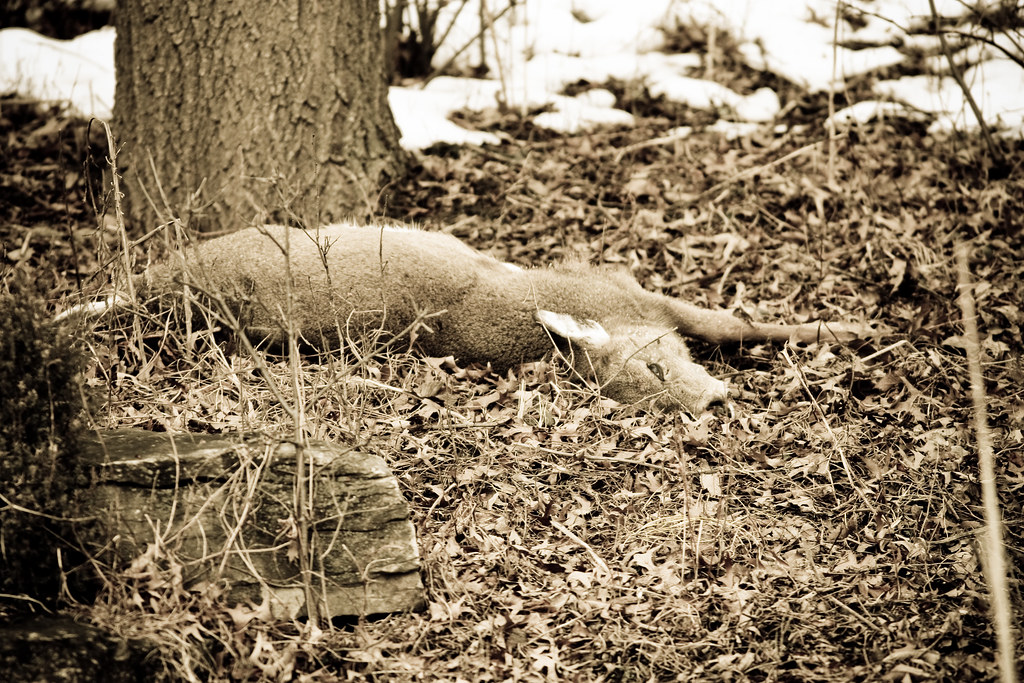 | |
| A dead yearling in the Rock Garden, Winter 2009 |
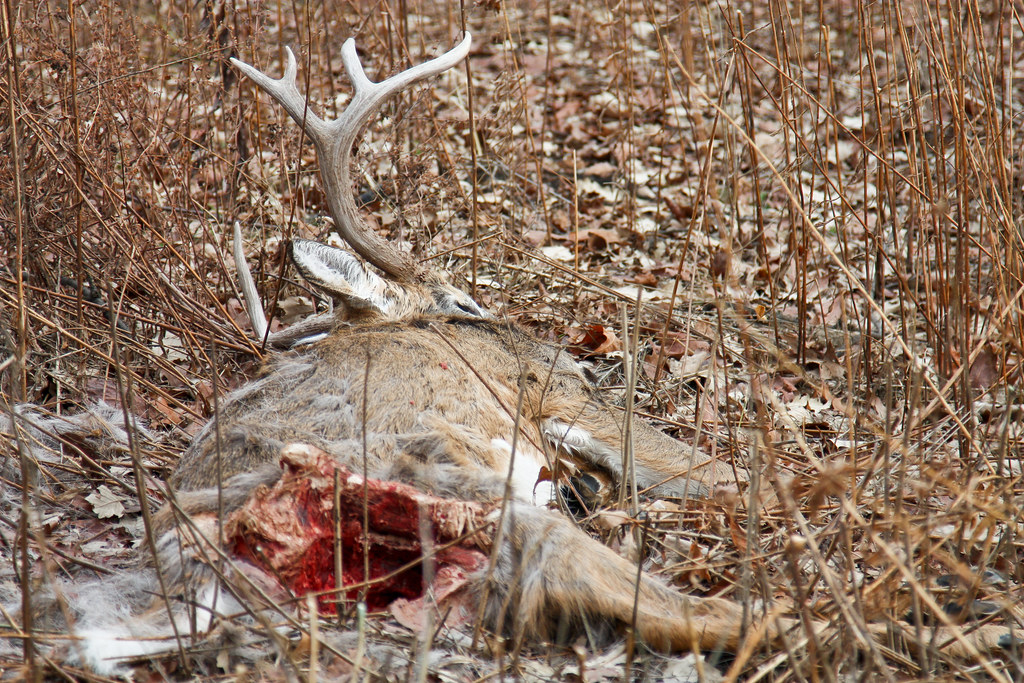 |
| A dead buck, partially scavenged by raccoons or possoms |
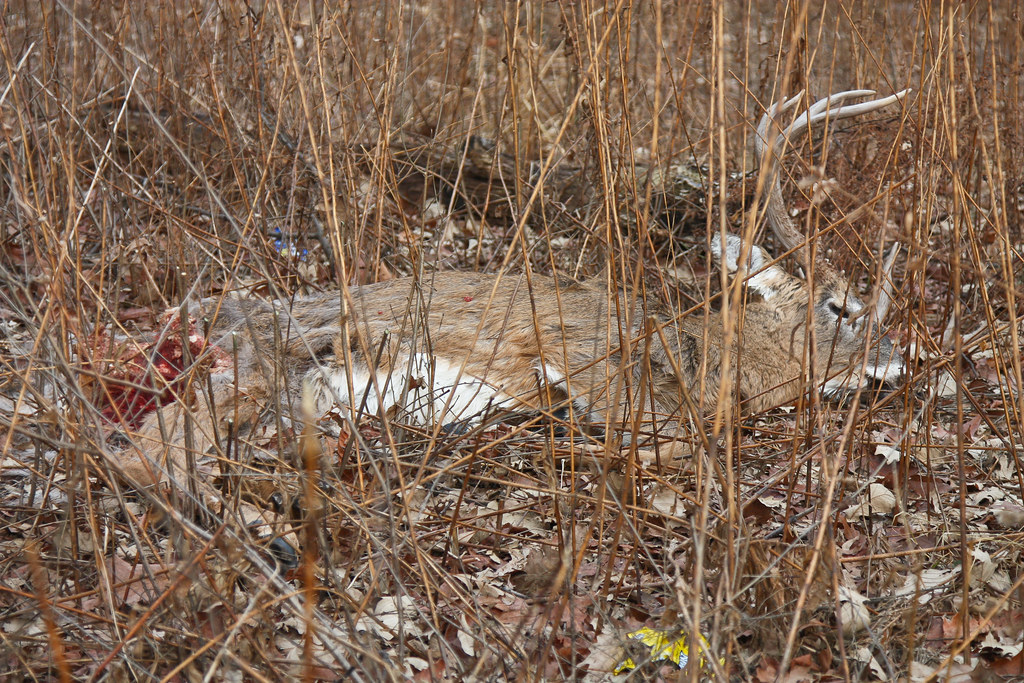 |
I understand the affection many people have for these deer. We're city folk and in a lot of ways, and these animals are really a connection to a natural world we don't come into contact with on a day to day basis. But that separation also means many people are detached from consequences that occur when a population exceeds its limited space and food sources. We look at natural spaces and think that somehow they're separate from the city, that they're islands that we've built around, that are self sustaining. They're not. We've created them through manipulation and isolation, and they're as much a part of the city as the asphalt and concrete of the streets and sidewalks.
We long ago broke these ecosystems. There are three mechanisms for overpopulation control in nature, migration, predation, and starvation. We've broken the first by isolating natural areas into small pockets that do not allow free movement of animals into areas for better foraging and grazing. The populations grow but can't move. Removal of large predators broke the second for large herbivores. There are no predators to keep the population in check.
So if we leave these broken ecosystems to themselves, the only population control left is starvation. Starvation is both the least kind to the animals and the most destructive, damaging the area not only for the deer themselves but for all other animals making use of it. When you overpopulate to the point that animals starve, you're going to do lots of irreparable harm to the environment and ecosystem.
Ask yourself, do you want lots of miserable deer or a few healthy and happy ones? That's the choice that we're faced with.
No comments:
Post a Comment